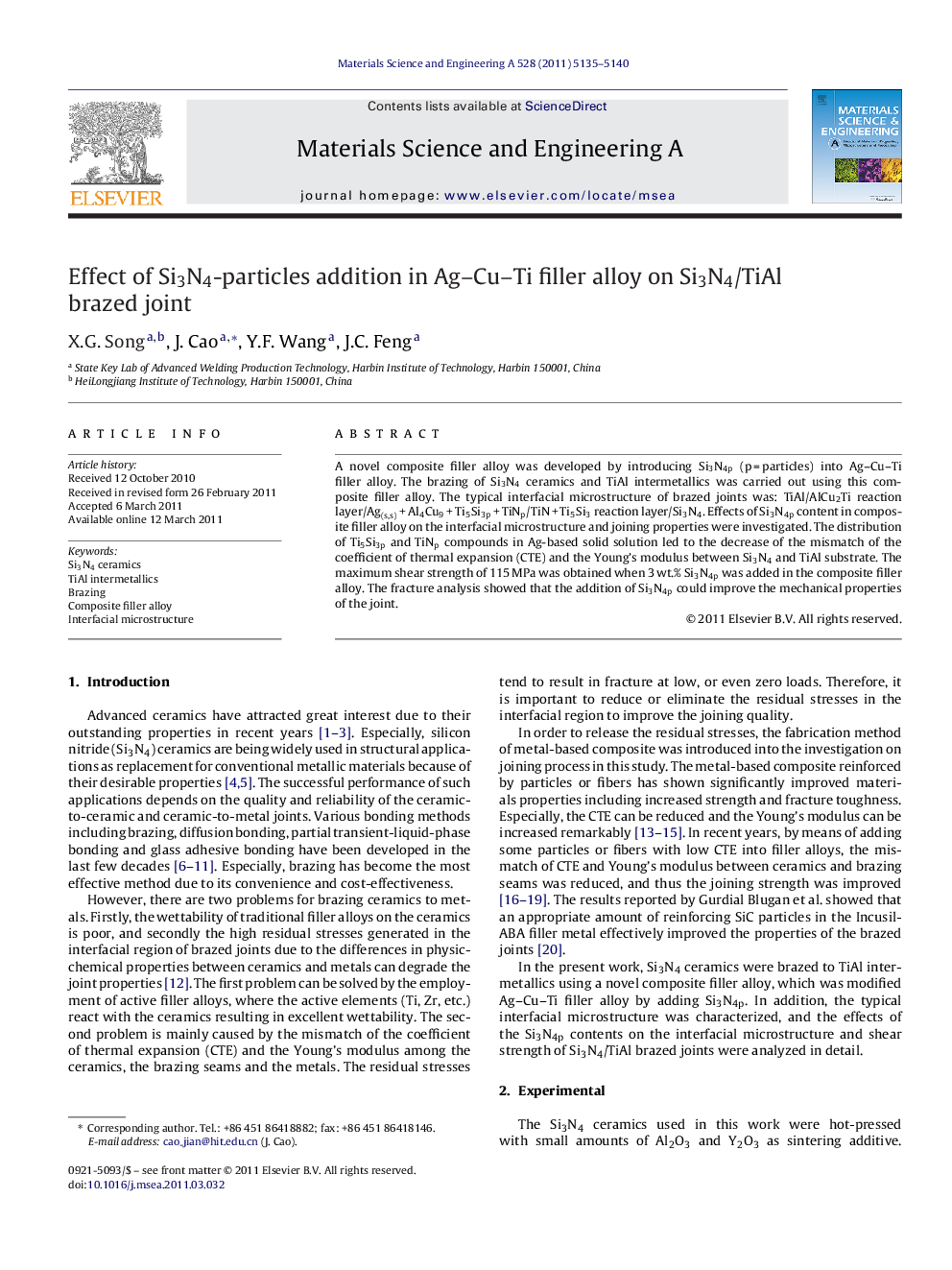| Article ID | Journal | Published Year | Pages | File Type |
|---|---|---|---|---|
| 1578891 | Materials Science and Engineering: A | 2011 | 6 Pages |
A novel composite filler alloy was developed by introducing Si3N4p (p = particles) into Ag–Cu–Ti filler alloy. The brazing of Si3N4 ceramics and TiAl intermetallics was carried out using this composite filler alloy. The typical interfacial microstructure of brazed joints was: TiAl/AlCu2Ti reaction layer/Ag(s,s) + Al4Cu9 + Ti5Si3p + TiNp/TiN + Ti5Si3 reaction layer/Si3N4. Effects of Si3N4p content in composite filler alloy on the interfacial microstructure and joining properties were investigated. The distribution of Ti5Si3p and TiNp compounds in Ag-based solid solution led to the decrease of the mismatch of the coefficient of thermal expansion (CTE) and the Young's modulus between Si3N4 and TiAl substrate. The maximum shear strength of 115 MPa was obtained when 3 wt.% Si3N4p was added in the composite filler alloy. The fracture analysis showed that the addition of Si3N4p could improve the mechanical properties of the joint.
Graphical abstractInterfacial microstructure of TiAl/Si3N4 brazed joints using Ag–Cu–Ti (a) and the composite filler alloy comprised Ag–Cu–Ti and Si3N4-particles (b), respectively.Figure optionsDownload full-size imageDownload as PowerPoint slideHighlights► The composite filler alloy was produced by introducing Si3N4-particles into Ag–Cu–Ti filler powders. ► Brazing Si3N4 and TiAl was achieved using the composite filler alloy. ► Interfacial microstructure was improved when the composite filler alloy with 3 wt.% Si3N4-particles was used. ► The mismatch of the CTE and the Young's modulus between Si3N4 and TiAl was reduced due to the improved interfacial microstructure. ► The residual stresses in the joint region were reduced and the joining properties were improved availably.
